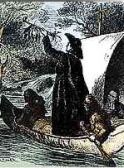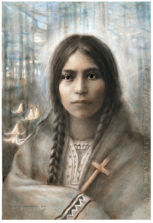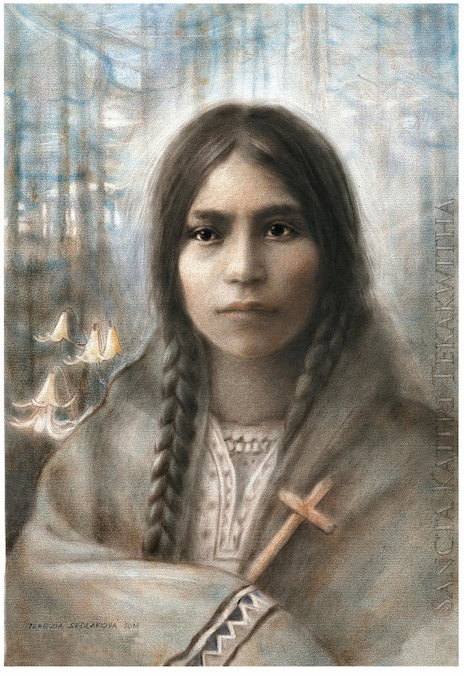Book 13 - La Victoire d'Angélique
This page is a devoted to a compilation and intelligent speculation about the content of Book 13 based on what is available in the literary world but not yet available in English translation - 'La Victoire d'Angélique'.
What you might consider a great title for a conclusion to this magnificent saga and even the publishers (on the back cover of the books) refer to this as the 'dernier' adventure, meaning, of course, 'last' or 'latest' and guess what - the final book is still being written ....... as the story had not yet been concluded. Fans were saddened to hear of the death of Anne Golon on 14th July 2017 but we still have some hope that the saga may be brought to a conclusion as the manuscript was being worked on by Anne Golon at the time of her death.
While we wait - I thought it would be more than appropriate to add the images of Anne Golon being interviewed on French Tv in 1985 to promote the publication of the 13th book.
Anne Golon engaging with her interviewer and mischievously checking her knowledge of the books (the interviewer was using a scrap pad of notes while conducting the interview - visible at as a yellow square in front of the interviewer) - the images are screen shots from the interview.
Some time ago I resurrected the 'review' I wrote for this, as yet, untranslated work and have added it to my reviews page.  The individual pages I have created for individual books is my desire to show how rich they are in content (not as erroneously referred to elsewhere occasionally as 'erotica') and to choose an area of interest to expand.
The individual pages I have created for individual books is my desire to show how rich they are in content (not as erroneously referred to elsewhere occasionally as 'erotica') and to choose an area of interest to expand.
Regrettably Victoire has so many different arteries leading off that it is difficult to determine which might be the most important. This page has, until yet concentrated on the direct effect the circumstances have on Angélique as of course they should as it is her story and the majority of this volume is centred directly on her and in particular her vulnerabilities and sense of survival. Recently I have added the 'Prophesy of Prague' to my pages of interest and as this is mentioned in Victoire a link has been provided to view separately as it is not key to this storyline at this stage.
Because the Jesuits create a time-line that has followed us from the earliest books; the visitor from the new world who visits when when Angélique is but a child and who influences Josselin to run away from home to seek his fortune; to Raymond de Sancé entering the clergy and in time becoming a leading Jesuit but not revealing his chosen path to his sister until she approaches him for help; I have decided to concentrate on this theme as a complement to the book. Although she does not fall foul of her brother, Angélique does lock horns with another Jesuit, one Sebastian d'Orgeval and those horns are unlocked in this book and as a consequence count towards one of Angélique's victories.
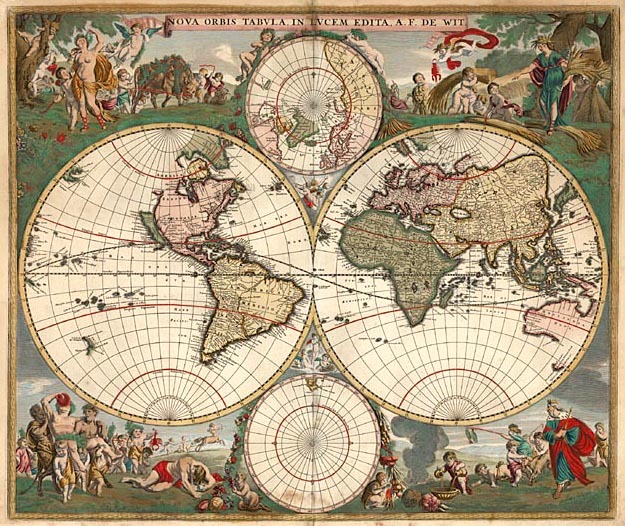
The 1660 de Wit map shows the world as known in 1660
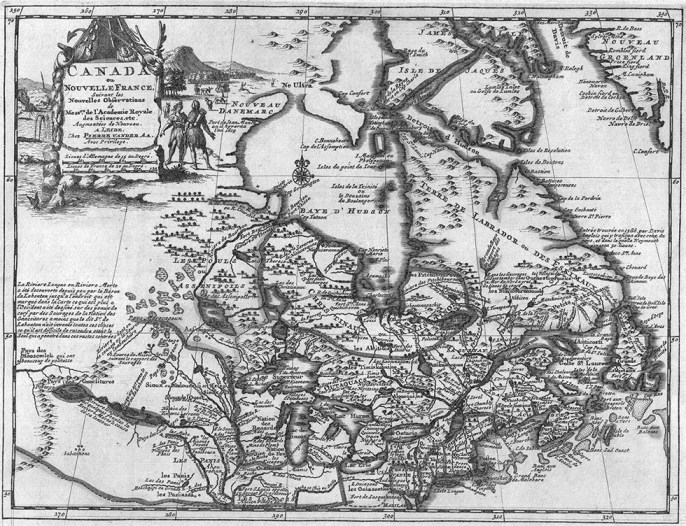
This map shows the domination and strength of the Jesuits conversion tactics
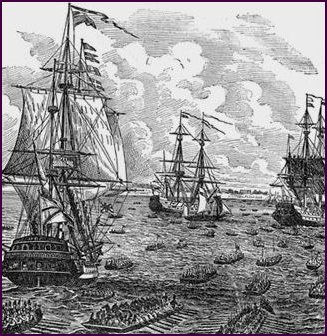
Could these have been what Angélique refers to as a 'beautiful' ship to take them back to France or is the ship beautiful only because it is taking them back?
In this book Angélique meets up with d'Orgeval in extreme circumstances when both he and she are cut off from the world in severe weather conditions not conducive to survival. The outcome is not happy despite Angélique saving this man who has plotted against her and pitted the strength of the church against her and challenged her mortal and immortal souls. d'Orgeval capitulates to Angélique and admits that he has misunderstood her and been misled to believe that she was the Demon whereas in reality he had been influenced by the real Demon in the form of Ambroisine, Duchess de Maudribourg. Yes, Ambroisine survived .... she killed one of the 'innocents' that Angélique so desperately wants to avenge, leaving the victims' remains in a manner that suggested death by Wolverine disguising her in her own unmistakable and brightly coloured clothes.
It was Cantor who discovered this and who, having none of the responsibilities carried by his elder brother, Florimond, who has now taken his place in court as the Count of Toulouse, determines to return to the New World to warn his mother of the double threat that she will once again be facing that of the Jesuit and the Demon.
As Cantor crosses the Ocean, the weather closes in on his mother.
Outtake, Chief of the Five Nations is directly responsible for bringing together these two principal characters, his intention being that Angélique should now exact revenge on d'Orgeval for all the wrongs he had done her and those whom she holds dear. Outtake does not understand why she nurtures d'Orgeval back to health when there is little enough for them all to survive on, sharing her meagre rations and tending his wounds.
Surprisingly, at the appropriate time d'Orgeval offers himself for martyrdom and perishes at the hands of the Five Nations .......
Who amongst us doesn't believe in miracles?
You don't have to be a Roman Catholic or French or devout, you don't need to have lived a blameless life - we all have hope for a miracle at some time or another, usually when we really need one! They can come in any shape or size, there is nothing to say it has to come with a whizz-bang or show of fireworks! I cam across something recently (December 2019) which immediately transported me back to the final paragraphs of 'Victoire' (as translated from the Polish version):
"The world did not lack for miraculous places and events, healing hands, cures, holy rivers, sacred streams blessed with God’s gift of healing, places where His might is apparent …..
‘I’ll go everywhere my beloved daughter*, even if I have to circumnavigate the world several times, I will save you!’
She hugged her with all her strength.
‘There won’t be any more sacrifices! Of that I am certain! I feel it! We’ll find everyone, we’ll rescue all our missing friends! And you will be beautiful! And you will be happy!‘
“In truth, surely, the heavens owe me that much!” she thought pensively."
(*Honorine)
In December 2019 I discovered St. Kateri Tekakwitha and read what I could about her, it prompted me to share that information on the Anne Golon tribute page that I own on Facebook : 'As Christmas and Anne Golon's birth date approach my thoughts turn ever more to religious celebrations as I await the happiness of the birth of Christ. Today I discovered the existence of another Canadian saint, Kateri Tekakwitha, the Lily of the Mohawks 'a 17th century Iroquois maiden'. Her feast day is 14th July also France's National Day, sadly the date of Anne Golon's death in 2017 and the date of our wedding anniversary (quite deliberately chosen). By the time Kateri was born in 1656 both Angélique and Louis XIV were 18. Kateri was short lived in comparison to Louis, his first grandchild was born in 1680 the year of Kateri's death making her just 24 and Angélique 42 during the time of events taking place in Salem (part 1 of Route de l'Espoir). Jumping forward the finale of Victoire (desperately trying to avoid spoilers for those who have not yet reached the end of the story as published) Angélique makes a very serious vow she fully intends to keep and I have no doubt Anne Golon had already planned the next steps. I often wondered if it would involve the advanced medical techniques of the Middle East which had already been proven with Joffrey's disabilities (Angélique in Love) or whether she would remain (or at least start her search) in Canada under the auspices of Marguerite Bourgeoys who, it is apparent, is a candidate for canonisation. Now I'm adding Kateri to the mix - what do you think?'
TEKAKWITHA (Tagaskouïta, Tegakwitha), Baptized Kateri (Katharine, Catherine). The First American Genuine Native to be Named Saint, Daughter of a Christian Algonquin Woman and a Pagan Mohawk. - This picture is published in the book ISBN 978-80-972681-3-8, 2018. Technique of this picture: Oil painting on the paper (dry brush) combined with colored pencils drawing. Image courtesy of fineartamerica.com and © of artist Terezia Sedlakova
She was Born 1656 Ossernenon, Iroquois Confederacy (New France until 1763, now Auriesville, New York), died 1680 April 17, Kahnawake (near Montreal), Quebec, Canada. She was Beatified June 22, 1980, in Vatican City by Pope John Paul II and Canonized as a Saint October 21, 2012, in Vatican City by Pope Benedict XVI. Her major shrine is in the Saint Francis Xavier Church, Kahnawake, Quebec, Canada.
Tekakwitha, baptized as Catherine and informally known as Lily of the Mohawks, is a Roman Catholic saint who was an Iroquoise Algonquin–Mohawk laywoman. Her real Mohawk name was Ioragode ("Splendor of the sun"). She belongs to the nation of the Iroquois, and among the Iroquois to the tribe of the Agniers, commonly known as Mohawks. She became Christian at age nineteen, when she was baptized Kateri (Iroquoise name for Catherine). Catherine Tekakwitha took a devout vow of perpetual virginity, she is known also as First Iroquois Virgin. Upon her death at the age of 24, witnesses said that minutes later her scars vanished and her face appeared radiant and beautiful. She is known for her virtue of chastity and mortification of the flesh. Various miracles are attributed to her intercession.
Ornaments in the background of the image are inspired by the image of Our lady of Guadalupe. Source : fineartofamerica.com

I like 'Wordles' and here is my interpretation of the 'as yet unpublished and untranslated' final (to date) book - Angélique takes centre stage and relevant words encircle her as does the story of our eponymous heroine.
Page refreshed : 31st March 2020 (G)


